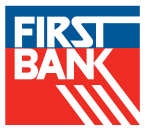You’ve likely heard your child ask questions related to finances before. Often, when they start asking questions related to money and finances, they are starting to show an interest in them. Although they might be interested in learning about money, they might not fully understand your responses yet. Helping your children understand money and its importance can help nurture their financial literacy and encourage healthy financial decision making in the future.
Here are four activities you can do with your children to help them understand money.
1. Coin and bill identification
A simple, yet effective way to help your children understand the basics of money is to have them identify the different coins and bills. Help them understand how to identify each one based off of color, size, and symbol. For information on each coin and their respective symbol, visit About the Mint. After they are able to identify the coins, begin introducing the different bills and how to identify each one. For more information on the design on each bill and how to differentiate them, visit the Seven Denominations.
2. Assigning value to bills and coins
Once they can accurately identify each coin or bill, start teaching them the value of each. For example, a penny equals one cent, a nickel equals five cents, a dime equals ten cents, and a quarter equals 25 cents. Once they can identify each coin and their value, introduce the dollar bill and explain to them that the coins contribute a different amount to equal a dollar bill. For example, four quarters equal one dollar, 10 dimes equal one dollar, 20 nickels equal one dollar, and 100 pennies equal one dollar. After they become comfortable understanding how many of the same coins equal a dollar, let them start mixing the different coins and their value to equal a certain dollar amount. Additionally, after they are comfortable with the one dollar, you can introduce the five dollar bill, ten dollar bill, and twenty dollar bill and repeat the process.
Read more on Three Ways to Help Children Understand the Value of Money.
3. Set up a play store
After your child can identify the different types of currency and their value, consider putting up a play store. Give items a price, allow them to shop, and let them practice buying different items using money. This will allow them to get a better understanding of the value of each coin or bill and will allow them to begin putting a monetary value on different items. Additionally, this can help them understand the concept of receiving change if they pay over the total price they owe.
4. Use a piggy bank for saving
Equally as important as understanding the different types of currency and their value is understanding the importance of saving. Utilizing the piggy bank received from opening a Kids Cash Savings Account is a great way for your child to keep their money in a safe place until you can take it to a local First Bank branch. To encourage saving, consider contributing a dollar to their piggy bank once they have saved a specific amount. One way to reinforce saving is to have two identical items priced at different dollar amounts. Let your child pick the item they think would allow them to save more money. This can also help them understand that similar products can have different dollar amounts but choosing the less expensive item is an ideal way to save a little extra money.
Understanding finances and the importance of saving is an important step in becoming responsible with money. Helping your child become comfortable with how to identify different coins and bills and understanding the value of each is an ideal step in setting them up for financial success later in life.
To learn more about how our products and services can help you and your family reach your financial goals, contact a trusted First Bank representative.


